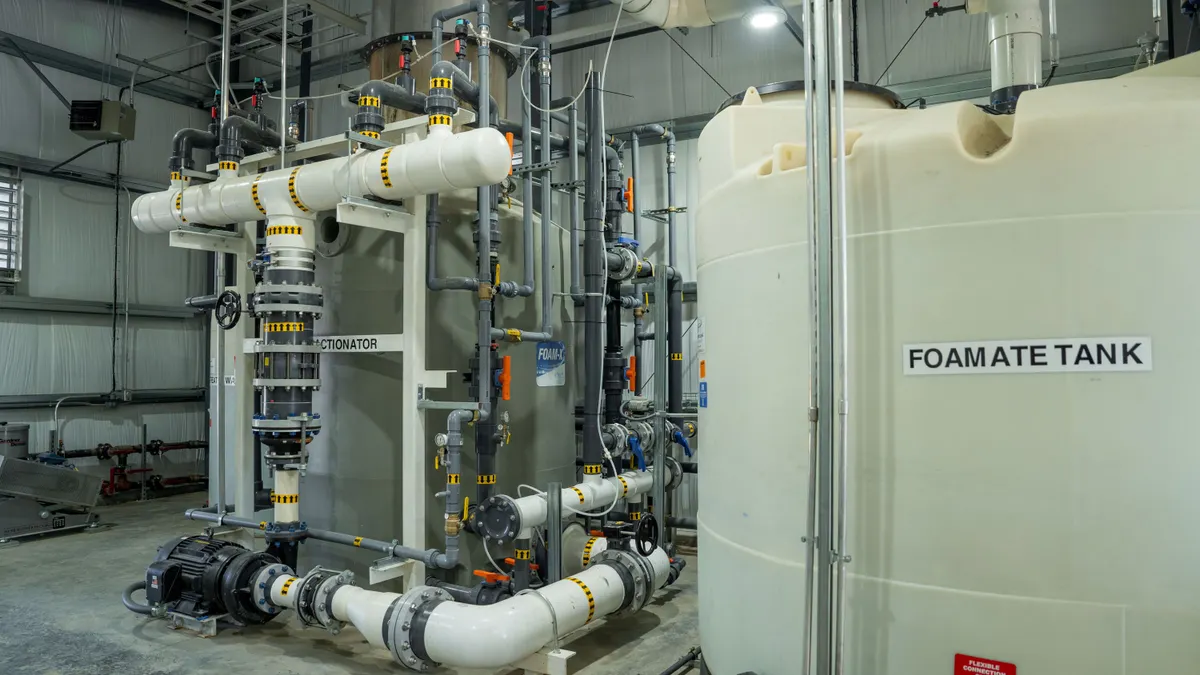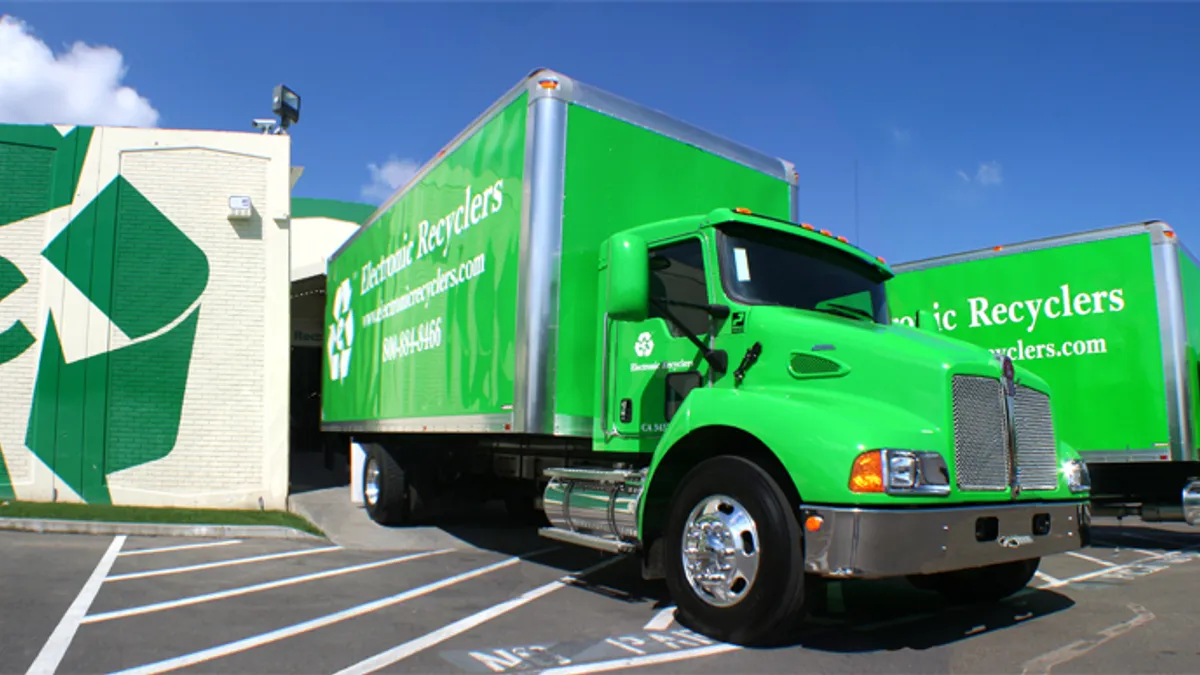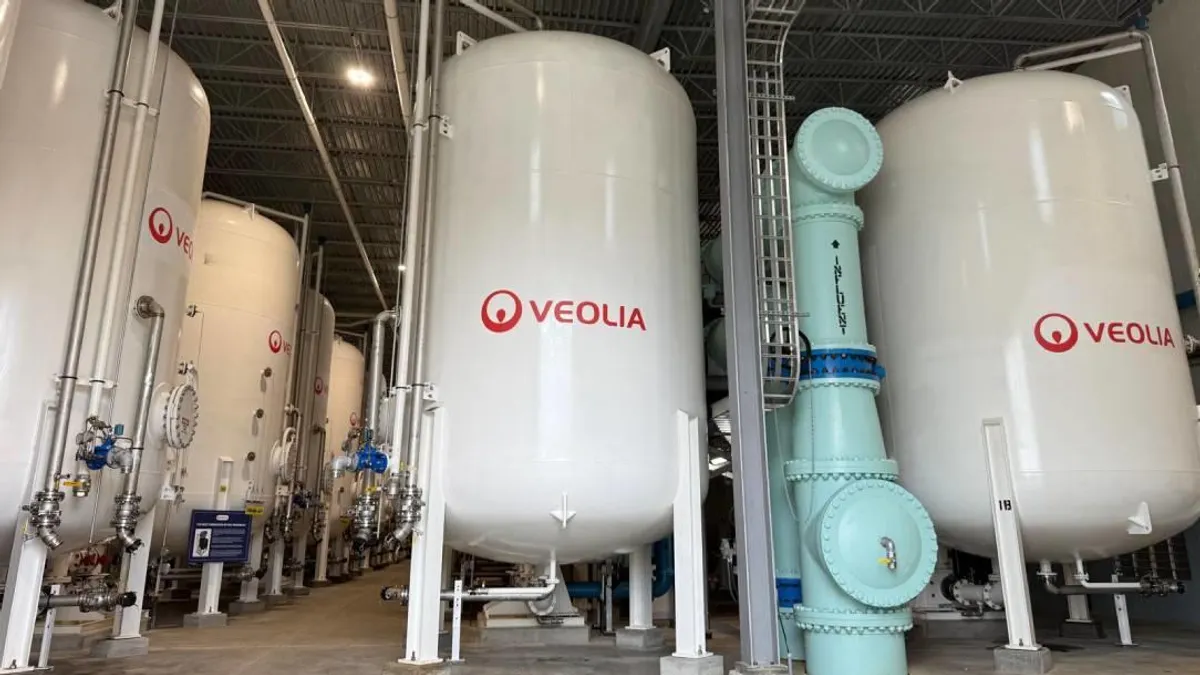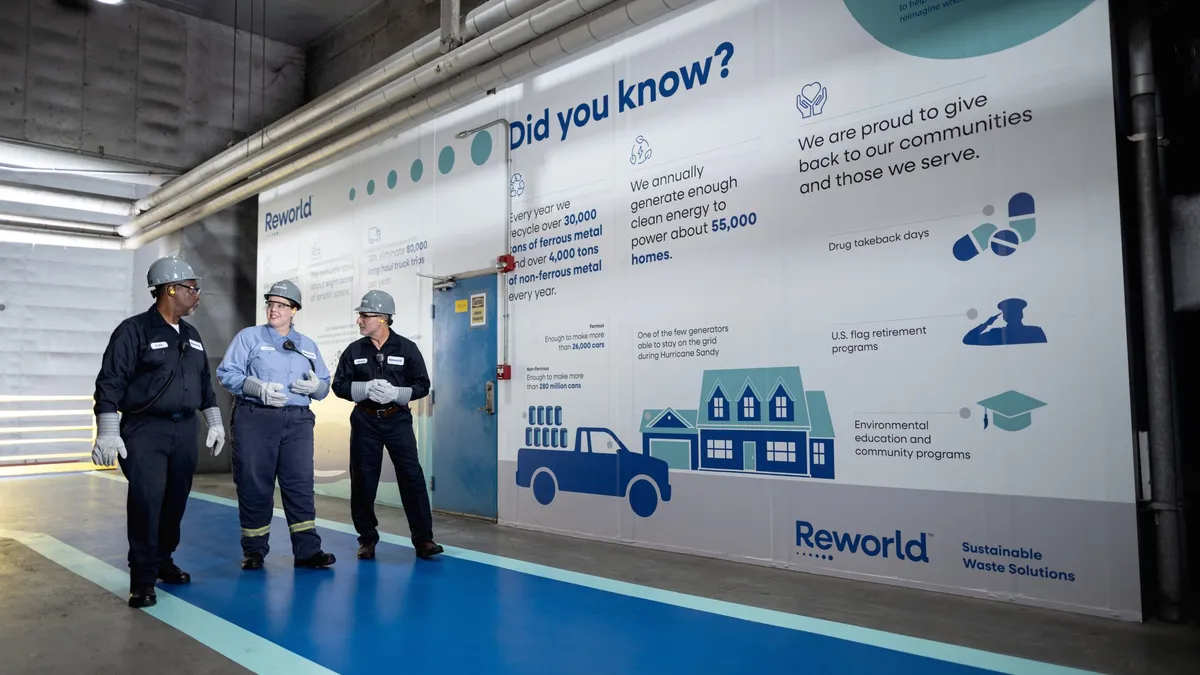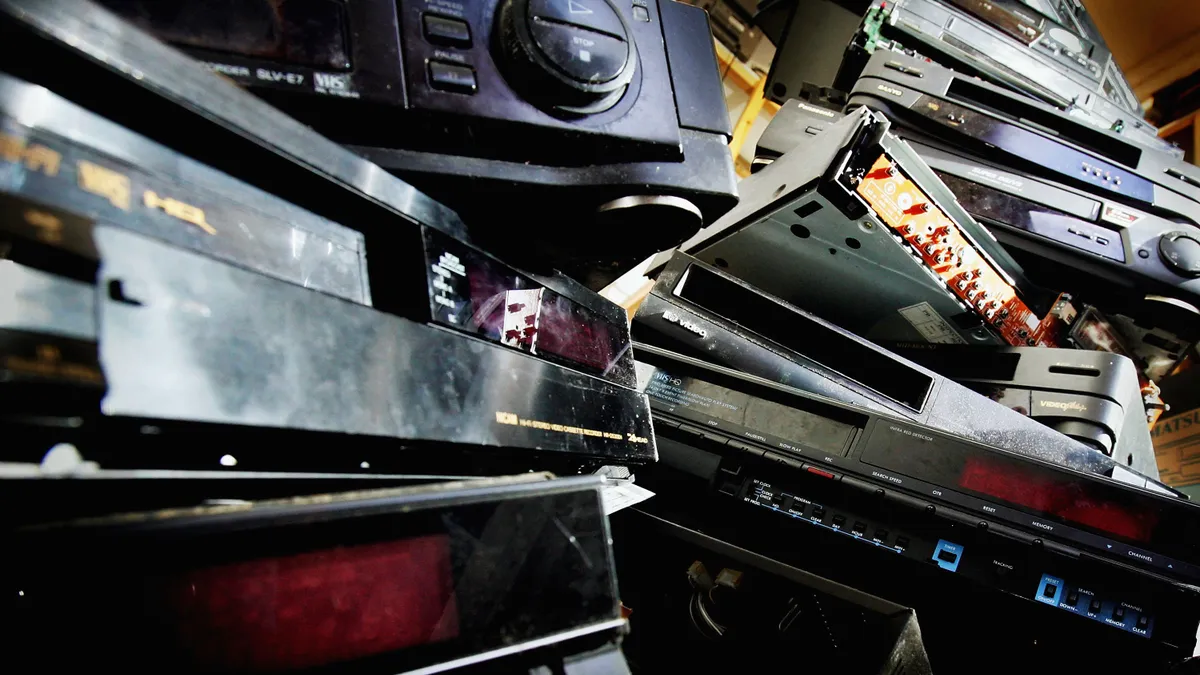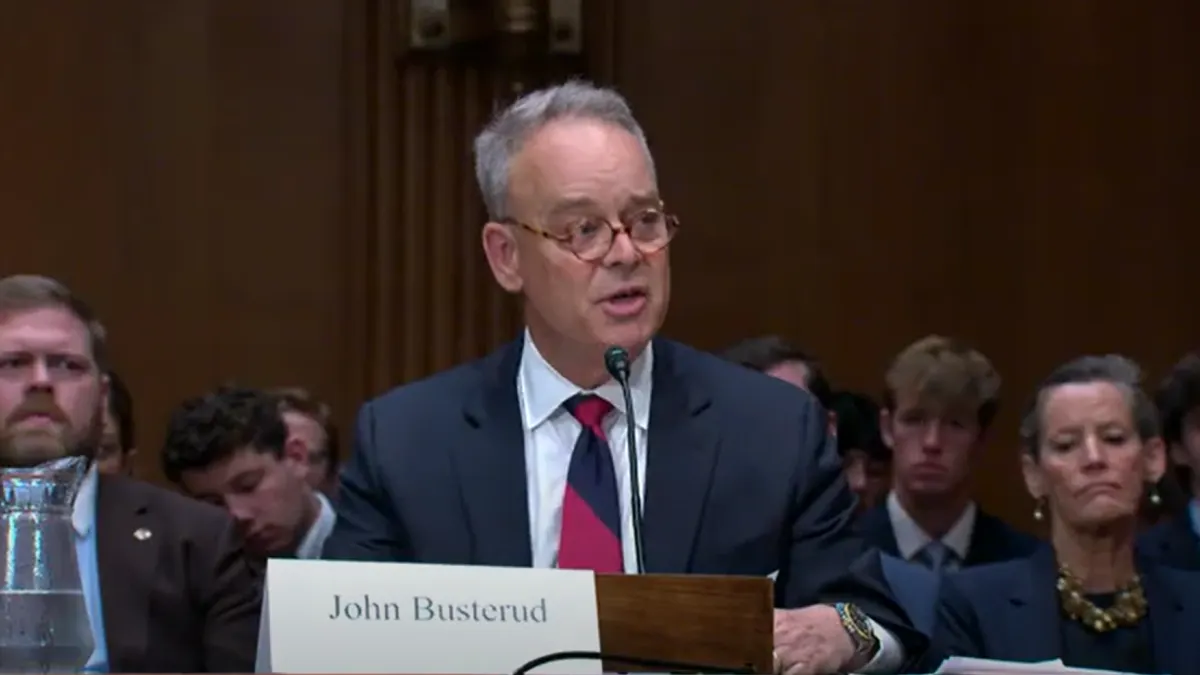The U.S. Plastics Pact has identified 11 plastic packaging items in its new Problematic and Unnecessary Materials list that are “not currently reusable, recyclable, or compostable at scale in the U.S.” and likely will not be by 2025. The pact calls for these items to be phased out by that year.
The group, part of the Ellen MacArthur Foundation's (EMF) worldwide Plastics Pact network, announced the list on Tuesday as the first step in its broader goal to speed up circular economy strategies for plastic in the U.S. The pact is led by The Recycling Partnership and the World Wildlife Fund and includes about 100 members, known as voluntary "activators," such as the Solid Waste Association of North America, National Waste and Recycling Association, Northeast Recycling Council, Nestle, TerraCycle, Coca-Cola, Clorox, Walmart, local governments and others.
| Problematic and Unnecessary Materials List |
|---|
| Cutlery, stirrers and straws (that are not reusable, compostable or recyclable)* |
| Intentionally added PFAS |
| Non-detectable pigments such as carbon black |
| Opaque or pigmented PET (any color other than transparent blue or green) |
| Oxo-degradable additives, including oxo-biodegradable additives |
| PETG in rigid packaging |
| Labels made of problematic materials or that use adhesives, inks, materials or features that render a package detrimental or non-recyclable per the APR Design Guide |
| Polystyrene, including expanded polystyrene |
| PVC, including polyvinylidene chloride |
| *when provided as an "ancillary item" to the main container |
The U.S. Plastics Pact, formed in 2020, aims to make all plastic packaging 100% reusable, recyclable or compostable by 2025. The group also seeks to recycle or compost 50% of plastic packaging by that same date, and further intends to ensure packaging has at least 30% recycled or bio-based content. International counterparts include the Canadian Plastics Pact and other pacts around the world.
U.S. Plastics Pact members produce about 33% of the plastic packaging included in its scope, according to a news release. The items on the list may comprise a small share of the overall waste stream, but the pact considers them particularly challenging materials to manage at end of life.
The group pledged to create the “problematic materials” list by 2021, an essential first step to achieving the other major recycling and reusability goals by the 2025 deadline, said Emily Tipaldo, executive director of the U.S. pact.
“The elimination of these problematic and unnecessary materials will enable advancements in circular package design, increase opportunities for recovery, and enhance the quality of recycled content available for manufacturers,” she said in a news release.
All members of the pact had a chance to vote on the list, and while not everyone is happy with the final list, signatories have still pledged to do their part to avoid or phase out the items, Tipaldo added in an interview. In general, recyclers have expressed the most optimism in the final items, she said, but “to date, where we've gotten greater pushback so far is really from upstream industry, and from the material producers and suppliers."
Initial reactions
Signatories to the pact include Eastman, a producer of plastics including PETG which was deemed problematic in the new list. The overall list was not a surprise, said Holli Alexander, strategic initiatives manager for global sustainability at Eastman, “but as a material supplier, there are definitely some things on the list that may not be the best news for us.”
Eastman has already been working for the last few years “to try and better understand PET recycling in the U.S. and try to make sure that the products and the materials that we are producing” are compatible with recycling, she said. Now included in that discussion will be how the company will manage its PETG.
However, Alexander is optimistic about the end goals of the pact and says it’s important for the company to be involved in order to collaborate with players at every point in the plastics value chain. Eastman has recently made some recycling investments, specifically in chemical recycling, and one goal for its involvement in the pact is helping to drive further improvements in U.S. recycling infrastructure.
Other plastics makers criticized the pact's list, including the American Chemistry Council (ACC), which said this could hinder the nation's recycling goals.
"The U.S. Plastics Pact lacked a transparent third-party, data-driven and scientific approach, and its process seems to be rooted in ideology and a predetermined, misguided outcome," said Joshua Baca, vice president of ACC's plastics division, in a statement. "In fact, the list of plastic materials they suggest be eliminated by 2025 will only hinder the acceleration of a circular economy, slow progress toward a lower carbon future, and reduce our ability to use greater amounts of recycled material in plastic packaging."
Baca stated ACC has already pledged that plastic packaging must include at least 30% recycled plastic by 2030, and that the U.S. Plastics Pact list could worsen food waste or "promote the use of many materials with a higher carbon footprint than plastics" instead.
Jan Dell of The Last Beach Cleanup, a nonprofit, added that naming items such as PVC could cause more harm than good in the years leading up to the 2025 goal.
"It’s been well known for years that PVC is a toxic material to produce and is a toxic contaminant in PET recycling. None of the products companies should be using it now. The 2025 deadline for elimination is worse than just a greenwashing delay tactic. It is allows toxics to be sold to consumers for three more years," she said in an email.
Dell also expressed concern that the list does not address contamination issues from plastic containers that hold pesticides or other harmful substances, which she says may affect recycled plastics destined to become food packaging.
Judith Enck, president of Beyond Plastics, called the pact's list a "thoughtful and credible effort that identified problematic materials that should not be in the recycling stream" in a reaction email. However, she said voluntary commitments have so far not made any impact on reducing plastics, and called for the recommendations "to be the basis for new laws across the world" and for the pact's activators to support passage of such laws.
Yet Kate Bailey, policy and research director at Eco-Cycle, a nonprofit MRF operator in Colorado, sees the list as a positive first step toward coming together across the plastics supply chain to make lasting improvements to plastics design, reduction, recycling and composting.
The list “is a really significant recognition that we are not simply going to recycle our way out of this plastics pollution problem, and that recycling is only one of many strategies that we need to employ," said Bailey. "It’s significant as really the first action by a collective industry and supply chain to acknowledge that not all plastics are recycled well, and some of these really should be phased out."
Broader implications
To determine which plastics must be phased out, the pact applied a series of criteria to determine whether the material contains hazardous chemicals, “hinders or disrupts” the recyclability of other items, or has a “high likelihood” of being littered. Whether materials can be avoided or replaced with a more recyclable or reusable material was another factor. Medical plastics, such as those used in hospitals and laboratories, are not included in the list.
The resulting list is the product of more than a year of research and meetings, but the list may change slightly in the future as the pact is scheduled to review it in 2023. Unless new science or drastically changed markets come to light, Tipaldo doesn’t think the list will change dramatically in that time.
This particular list was developed specifically to guide the members of the pact. Yet the list’s design could have an influence on future recyclability decisions being made at the state and federal level. California passed a “truth in labeling” law last year, which will impact which items get recycled in that state. Meanwhile, Oregon’s new extended producer responsibility law includes a task force meant to evaluate misleading or confusing claims about certain products’ recyclability.
Bailey and Tipaldo said California and Oregon’s laws are more “robust” and narrowly focused than the general list the U.S. Plastics Pact has come up with, but they see the pact’s list as potentially compatible with ongoing state-level decision making. Many of the materials on the pact’s list are already being phased out in Canada and the EU, too.
“I think there are lots of intersections with other existing guidance out there,” Tipaldo said, adding that recyclability guidelines set out by groups such as the Association of Plastics Recyclers and the Consumer Goods Forum already restrict some of the items that also top the pact’s list. The U.S. pact aims to add authority to its list through its extensive list of activators and their public pledge to follow the steps toward the 2025 goals.
Because the U.S. Plastics Pact is part of EMF’s global circular economy strategy, American members also looked to the problematic materials list published by the UK Plastics Pact. The UK named many of the same items, including disposable plastic cutlery, all polystyrene packaging, “oxo-degradable” plastics, PVC, and other items.
One major difference between the two lists is that the U.S. includes PFAS-containing items. Tipaldo said PFAS is “a non-issue” for some of the Plastics Pact groups, namely in the EU, because it's already a substance that's been regulated by the European Commission. Future state legislation in the U.S. could help speed up bans on PFAS in packaging in the U.S.
The next challenge is for pact members to determine how the problematic materials list will impact their daily operations and how they'll start reducing and eliminating such materials.
“There'll be bumps and challenges and changes that are going to need to happen for all of us, from resin suppliers to packaging producers to brands, but also extending into the recycling end of the value chain,” Eastman's Alexander said.








